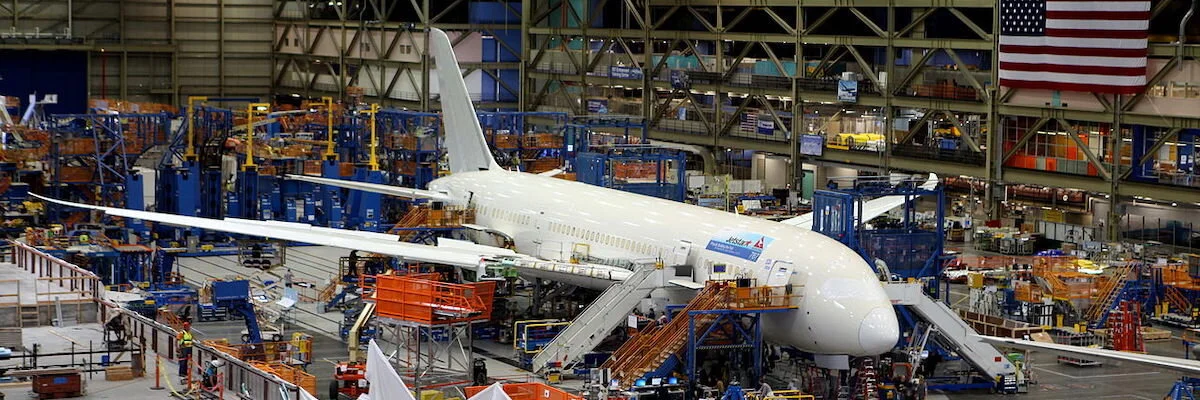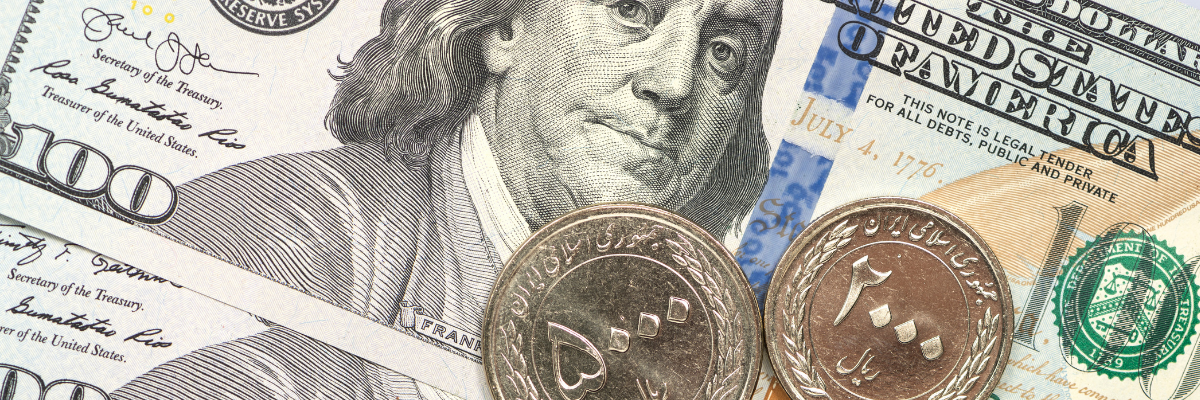Making Peace With Iran and North Korea Could Be Good for U.S. Workers
By Christopher Lawrence
When now-retired Republican Sen. Bob Corker put a hold on U.S. arms sales to Saudi Arabia in 2017, White House trade advisor Peter Navarro drafted a memo titled “Trump Mideast arms sales deal in extreme jeopardy, job losses imminent.” The memo, along with the Trump administration’s subsequent decision to lift the hold, is often framed as cynical trade-off: Billions of dollars’ worth of U.S.-made military hardware were helping to sustain a humanitarian crisis in Yemen, but those same dollars could help support thousands of American jobs. Faced with the choice between workers at home and human rights abroad, the Trump administration appeared to have put “America first.”
But bombs aren’t the only thing the American worker can build for the Middle East. Just as President Donald Trump was ramping up arms sales in the Gulf, he was also working to kill the Iran nuclear deal. A primary component of that deal was economic—as sanctions lifted, Western companies could help rebuild Iran’s aging civilian infrastructures by resuming trade and investment in Iran. One of the earliest contracts that Iran signed called for American aerospace manufacturer Boeing to build 110 jumbo jets—worth roughly $20 billion—to help revive Iran’s civilian air fleet. The estimated nearly 20,000 U.S. manufacturing jobs the civilian contract could have created was strikingly similar to number associated with the Saudi arms deal, yet it was terminated when Trump backed out of the Iran deal and reimposed sanctions.
These two episodes highlight what could be a turning point for U.S. foreign policy. Trump and his challenger Joe Biden both campaigned on promises to revitalize U.S. manufacturing and reduce U.S. military interventions abroad. Yet for the last four years, both Trump and his critics painted a false trade-off between those endeavors by overlooking the economic dimensions of U.S. diplomacy. Now that Biden is president, his administration can either accept that false trade-off or design new policies that pursue his domestic and diplomatic agendas in tandem. One of his biggest foreign-policy challenges is to reengage Iran and North Korea, two countries whose regimes have sought political and economic relations with the West for decades.
Under U.S. sanctions, Iran’s and North Korea’s infrastructures are in disrepair, their natural resource sectors are underdeveloped, and their populations are largely cut off from Western economies. But absent sanctions, Western firms could pursue untapped opportunities in such sectors as oil and mineral extraction, transportation, and port infrastructure, many of which would involve industrial equipment that U.S. workers could build at home.
Connecting diplomacy with domestic economics could help resolve a fatal defect of past nonproliferation agreements: They’ve generally lacked substantial domestic stakeholders in the United States with a vested interest in implementing America’s diplomatic commitments. In the case of the Iran deal, this meant that even though the Obama administration had sunk considerable political capital in crafting an effective solution to the Iran nuclear crisis, the subsequent Trump administration faced little political cost in abandoning it.
Another promising nonproliferation deal—the 1994 Agreed Framework, which substantially set back North Korea’s nuclear program—suffered a similar fate when a hostile George W. Bush administration entered office and scuttled it. In both cases, American negotiators focused on enforcing strict nuclear constraints to guard against cheating from the other side, but they neglected to ensure implementation of U.S. commitments or protect their diplomatic achievements from future U.S. administrations.
Had those deals been better connected with domestic economic benefits, they might have been more robust in the face of changing political tides. Today, now that the credibility of U.S. nonproliferation diplomacy is in tatters, other governments will expect a Biden administration to future-proof U.S. commitments by cultivating supporters of diplomacy at home.
But could economic development in a country help curb its nuclear program? History suggests that it can, and the Agreed Framework is an illustrative case. In that deal, North Korea agreed to dismantle its plutonium-production reactors in exchange for civilian power reactors from the West. North Korean negotiators explicitly described the civilian reactor project as an “indication of U.S. good faith” and a sign that the U.S. government might end its “hostile policy” toward North Korea. As construction on the civilian reactors commenced, the regime essentially gutted its plutonium infrastructure. This suggests that economic engagement can help a regime feel less committed to nuclear weapons.
Critics of engagement will reject any policy that appears to reward a country for simply abiding by the international nonproliferation norms that the rest of the international community already respects. But this misses the point of economic diplomacy. Experts have long warned that in order to truly resolve nuclear proliferation crises in Iran and North Korea, the United States must fundamentally change its relationships with those countries.
The trick, however, is that after decades of animosity and unpredictable policies, U.S. negotiators can’t simply promise to change those relationships. Instead, the U.S. government must commit some durable act that goes beyond mere words and written agreements.
In the case of the 1994 Agreed Framework, this was the point of building civilian power reactors in North Korea. In the words of one U.S. diplomat, nuclear reactors “are not the sort of things a country gives to an enemy,” and had those reactors been fully constructed, the United States and its regional allies would have been “hardwired” into the technological and economic relationships that would be required to safely operate those reactors in North Korea. Thus, reactor-construction steps helped signal that the United States would eventually normalize diplomatic relations with North Korea if the Agreed Framework were to survive, and this was just what the regime needed to feel secure in rolling back its nuclear weapons program.
A similar opportunity was missed with Iran in the 1990s, when Iranian President Akbar Hashemi Rafsanjani sought to collaborate with U.S. oil company Conoco to develop its oil infrastructure. His political goal was to facilitate a durable form of Iran-U.S. engagement to pave the way for broader reconciliation, and U.S.-based opponents of that reconciliation quickly foiled his plan. But the U.S.-Iran relationship might look different today if that project had gone forward.
Physical investments like these, if properly designed and carried out, could create a shared vested interest in preserving more positive relationships that might transcend partisan politics in Washington and regime politics in Tehran and Pyongyang. And they can send a more credible signal that nuclear rollback will lead to the secure and prosperous future that the U.S. government has promised in previous campaigns of nonproliferation diplomacy.
As Biden attempts to reengage Iran and North Korea, he should seek to establish a form of economic diplomacy that outlasts his administration. And infrastructure investments that promote both nonproliferation objectives and American jobs might finally do the trick.
Ironically, the Trump administration may have left Biden with the perfect tool for connecting diplomacy with U.S. manufacturing: a revived U.S. Export-Import Bank. While Trump reauthorized the Ex-Im Bank as part of his strategy to counter China’s Belt and Road Initiative, it could be the key to linking nonproliferation diplomacy with U.S. manufacturing.
When the Iran deal was signed and Western companies sought to do business in Iran, the main barrier they faced was that major banks did not want to finance their projects for fear that sanctions might be reimposed. The Boeing deal was among the contracts that were delayed for this reason. Facilitating some of these transactions will need to be a major part of resurrecting the Iran deal. Meanwhile, the Ex-Im Bank specializes in underwriting international transactions that benefit U.S. workers, and it has a long history of enabling U.S. businesses in exactly the sectors that need to be developed in Iran.
As for engaging North Korea, South Korean President Moon Jae-in has already proposed a series of ambitious development projects in North Korea under the heading of his “New Economic Map,” but these projects are currently barred under sanctions. If renewed U.S.-North Korea negotiations unfold, the Biden administration should not only put sanctions relief on the table but also offer Ex-Im Bank financing for some of those projects in exchange for nuclear rollback steps in North Korea. For example, if U.S. financing could help develop North Korea’s mining infrastructure to tap its deposits of rare-earth minerals, that could give North Korea a new and influential role on the world stage that doesn’t depend on nuclear weapons. At the same time, the U.S. government could tie ultimate completion of those projects to future rollback steps.
In both the Iran and North Korea cases, economic engagement that connects nonproliferation diplomacy to U.S. jobs offers the most promising path both for rolling back nuclear programs and for incentivizing future administrations to continue building on U.S. diplomatic achievements rather than squandering them and starting from scratch.
Christopher Lawrence is Assistant Professor of Science, Technology and International Affairs in the Walsh School of Foreign Service at Georgetown University. Follow him at @cclawr_law2.
Photo: Wikicommons




